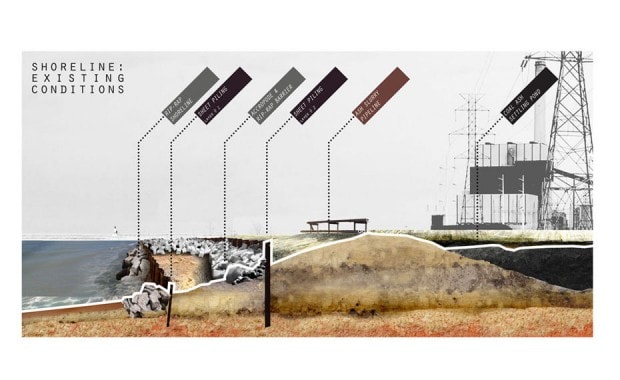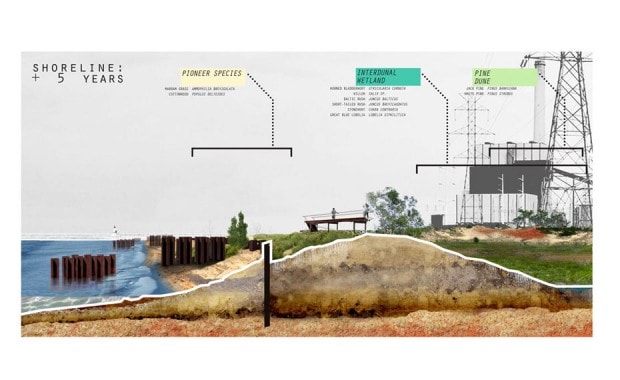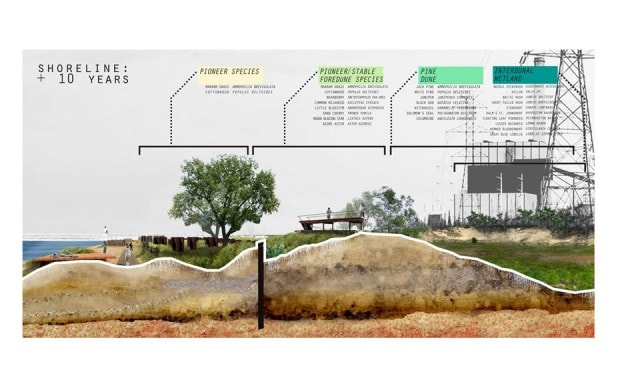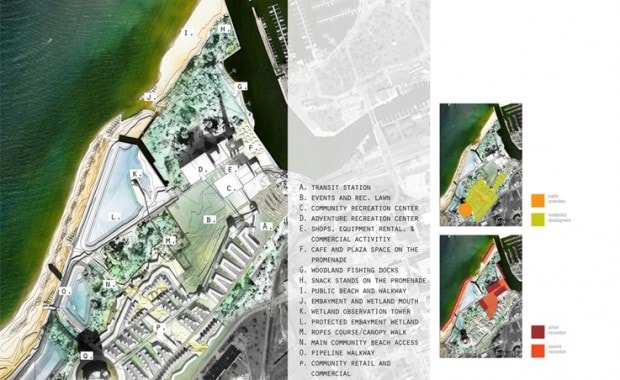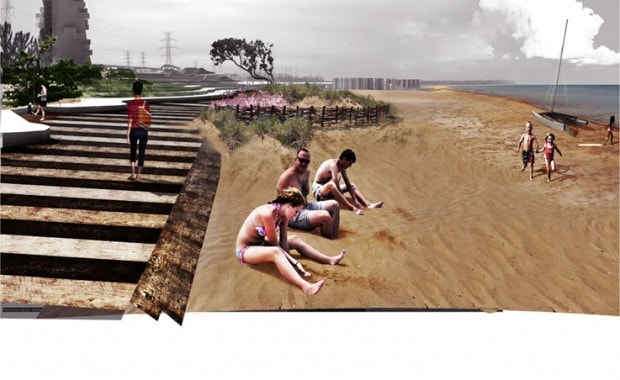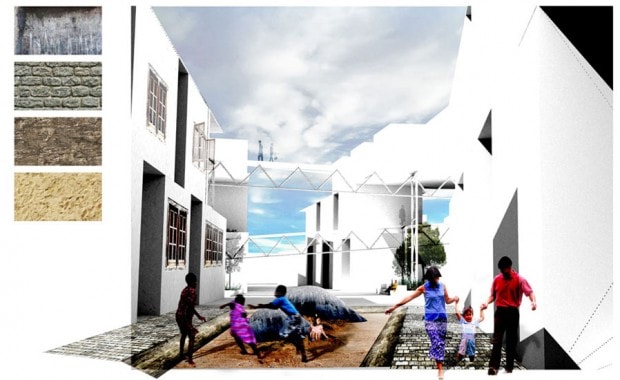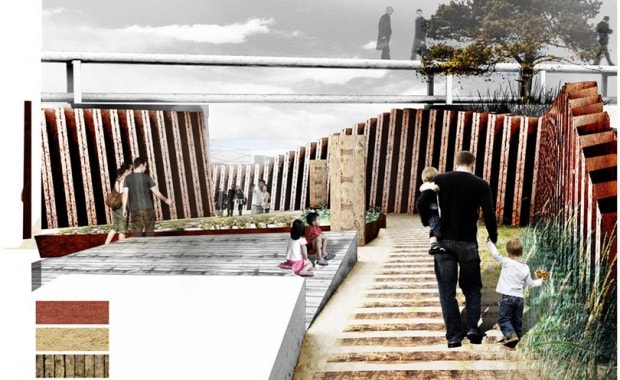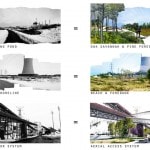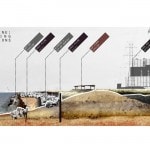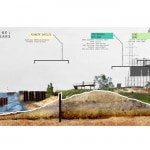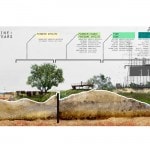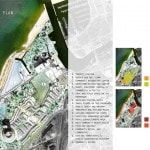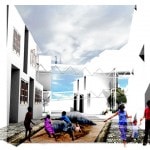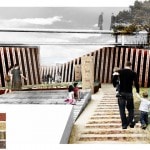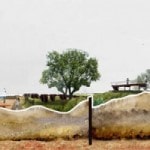Project: Reclaiming the Shoreline: Redefining Indiana’s Lake Michigan Coast
Location: Michigan City, IN
Designer: Dane Carlson
Year: 2011
Program: Ball State University, Undergraduate
Project Description: The NIPSCO coal generating station in Michigan City, Indiana is one of a series of industrial complexes which have dominated the shoreline of Lake Michigan for decades, bringing with them pollution of ground and water and crippled shorelines. This design solution utilizes the framework of industrial infrastructure to return the site to ecological and community function; as ecological processes develop through a series of phases, human inhabitation brings the site to life.
Program: The program consists of three primary components: ecological development, creation of a public realm and spatial network, and community development. Rather than creating the site as a destination, the program intends to extend all surrounding elements directly into the site design.
Ecology: Reestablishment of tiered dune ecosystems is the primary component of ecological restoration. The introduction of new sediment flows through littoral drift and longshore current, in addition to the creation of a semi-permeable jetty, allows for the accretion of sand along the shoreline, and this process is accelerated by the staggered formations of sheet pilings driven into the lakebed. As a new layer of dunes form here, landward sand becomes stabilized by pioneer vegetation, allowing it to host new and varied plant communities.
Four intradunal wetlands, also known as pannes, and one coastal wetland replace the series of ash settling ponds along the shoreline. The remaining layer of sheet piling, together with a sub-grade sheet of clay, forms a waterproof barrier leading to the accumulation of water at the bottom of each depression. The wet feet of each depression make them uniquely suitable to host rushes and sedges which form the basis of panne plant communities.
The creation of dune forests inland of the shoreline mimics the natural progression of successional dune ecologies. The initial layer of dunes begins organic matter accumulation with cottonwood and dunegrass. Jack pine forest and oak savannah inhabit the layers of dune beyond this, and oak/hickory forests beyond these. Introduction of these tiers of dune evolution creates the basis for a permanently evolving, functional ecological system which mimics that of the national lakeshore to the south.
Community: Introduction of dense residential development allows the site to be a place of inhabitation as well as a destination. Located directly north of an existing neighborhood, this new community provides pedestrian connections to existing streets and allows residents from surrounding communities to access pedestrian circulation routes into the heart of the site. Community development lies on the site’s southern portion, maintaining the northern reaches as a place for ecological growth, ecotourism, and education. All homes front on open space and residents can easily access woodland canopies or recreational hotspots through aerial circulation systems. A central node makes basic services, such as daycare and grocery, within walking distance of homes.
Public Realm: The most iconic features of the generating station, in addition to most of the auxiliary structures, are adapted into public amenities. In the west, the cooling tower becomes a hotel, providing a viewing platform for the public and creating an anchor for the aerial circulation system. This system extends eastward through the community, carving a path for the creation of a green avenue defined by woodland plantings. To the east, both boiler houses host sport courts and adventure recreation due to their proximity to the creek’s waterfront. Here, an extension of the Franklin Street corridor forms the primary commercial and open public space on site. Access extends northward, connecting this attraction to the public beach through a series of woodland and waterside pathways open only to pedestrians.
| previous project | next project |

